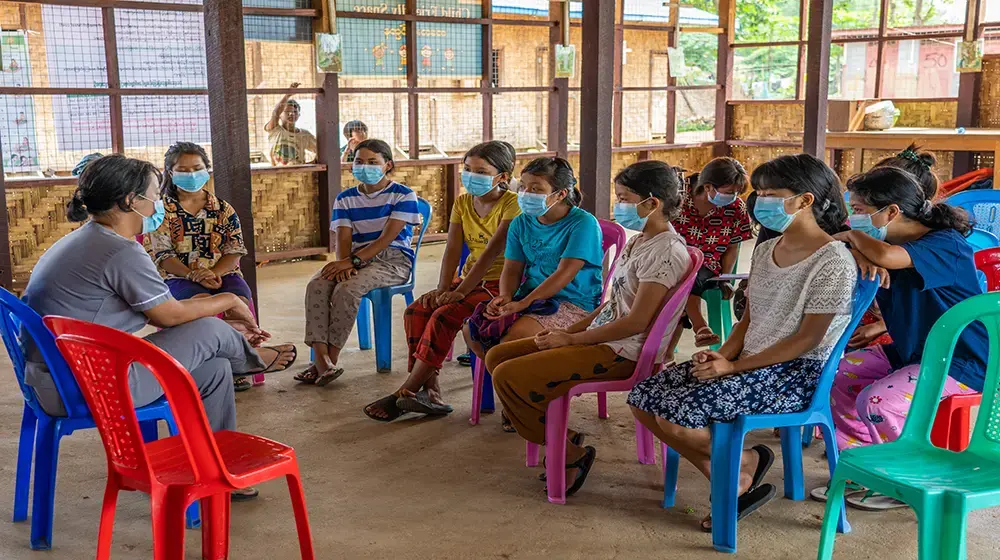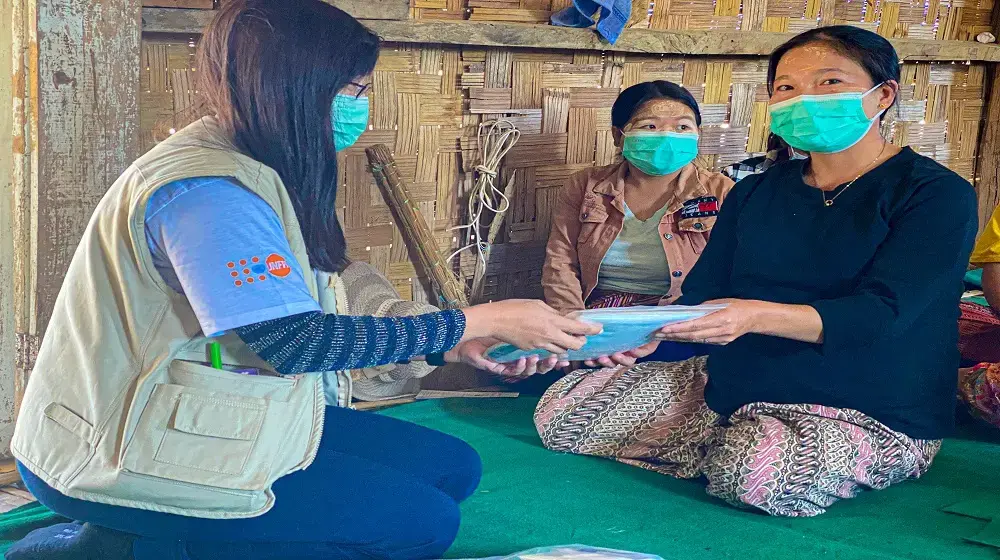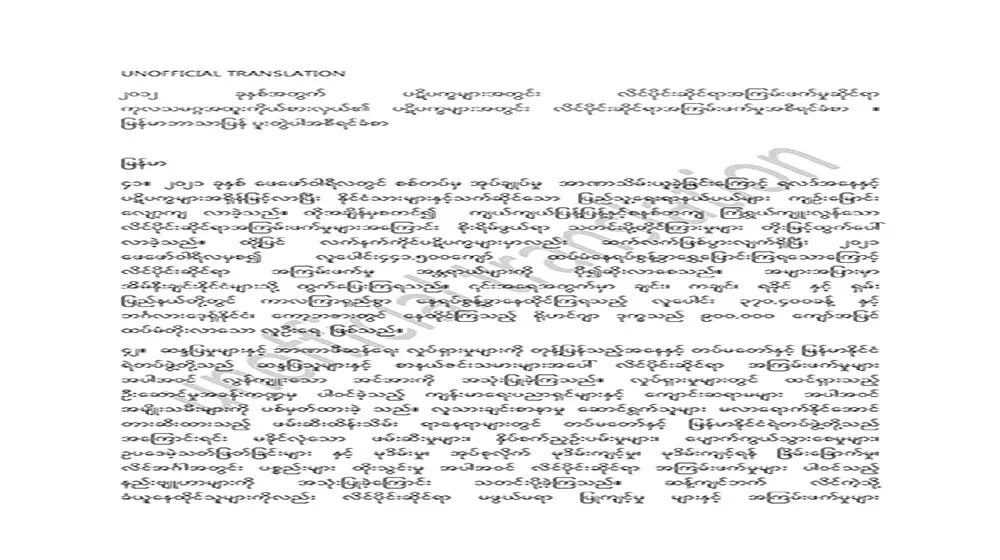Khin Me Me Htun was 22 years old when a wave of inter-communal violence swept across the Myanmar state of Rakhine in 2012. She had just completed her BA in English at Sittwe University, and was due to go to Yangon to pursue her dream of post-graduate studies in diplomacy.
Then the unthinkable happened. Khin Me, her family and her entire community were driven out from their homes and away from Sittwe in sectarian riots. Almost four years later, in 2016, she is among 120,000 people who remain
displaced by the conflict. Most struggle to survive in unforgiving conditions in camps located only a few kilometres from their hometown. So near, and yet so far. Confined to restricted zones, they cannot go back to their homes. They remain shut off from employment, from healthcare, from education, from life as they knew it, from the world.
Khin Me is one of about 1 million people in Myanmar who wish to self-identify as Rohingya, a Muslim minority in the country. Their plight came into international focus in 2015 when an estimated 25,000 people fled across Southeast Asian waters, many of them trapped floating at sea in rickety boats without food and water when refused refuge on land. Khin Me is haunted by memories from that night in Sittwe in 2012 when inter-communal fighting erupted and people were beaten with steel sticks, tied up, and some knifed to death. Her father was seriously injured.
“I saw my father’s brain”, she says. “I saw my friend die from a knife wound. There was blood everywhere. That was the last time I saw my neighbourhood.
The greatest fears is having to go to the latrines in the evening
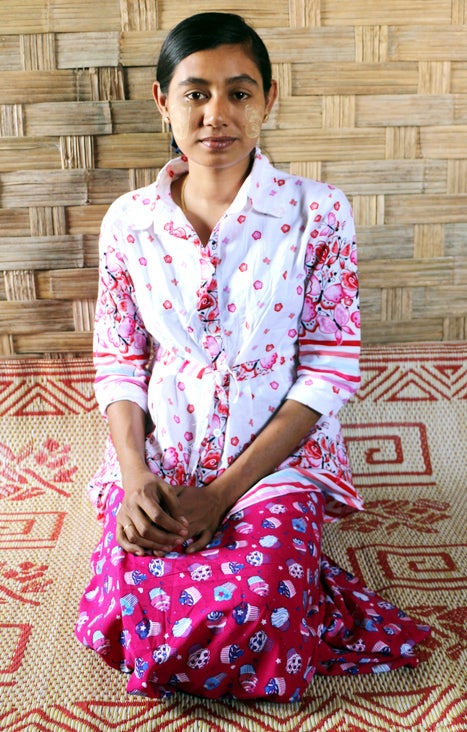
Today she lives in a village adjoining a camp for displaced people. Villages and camps in Rakhine are guarded by authorities, and are both under the same movement restrictions. Nobody enters or leaves without permission unless escaping passed checkpoints.
Khin Me is a city girl at heart and adapting to village life has not been easy. On her phone, she keeps photos from her life in Sittwe. They show a young woman going to cafes with friends, dressed up for a cinema evening, graduating from university, sharing a coconut on the beach with a cousin. The jeans-clad and playful Khin Me in the photos looks very different from the serious and dignified Khin Me of 2016. Petite of frame, she looks fragile, and her large eyes deepen when she speaks about her life before the catastrophe. In town, her family ran a pharmacy and a popular tea shop. Their house had tap water, 24-hour electricity, and a toilet. In the village, she collects water from a shared pump, there is electricity only 4 hours a day, and the latrine is outside the house.
“First it was strange. I cannot wear trousers. Women don’t go to the tea stall. There is nowhere to borrow or buy books.”
But Khin Me knows how lucky she is that, thanks to family friends, she now lives in a village. The hopelessness of confinement is the same across villages and camps in the restricted zones. But in the windswept desert-like camps, life is grimmer and more dangerous. Especially for women and girls. One of the greatest fears is having to go to the latrines after seven in the evening. Walking in the dark to reach latrines, women and girls are fearful of sexual assault and rape.
But women and girls are under threat even if they stay inside after dark. The shelters have no locks on the doors to keep intruders out. And inside these small and stiflingly hot makeshift huts, families live day after day, year in and year out without privacy or respite, in conditions that breed despair and frustration, and that contribute to domestic violence.
Women and Girls Centres provide a safe space
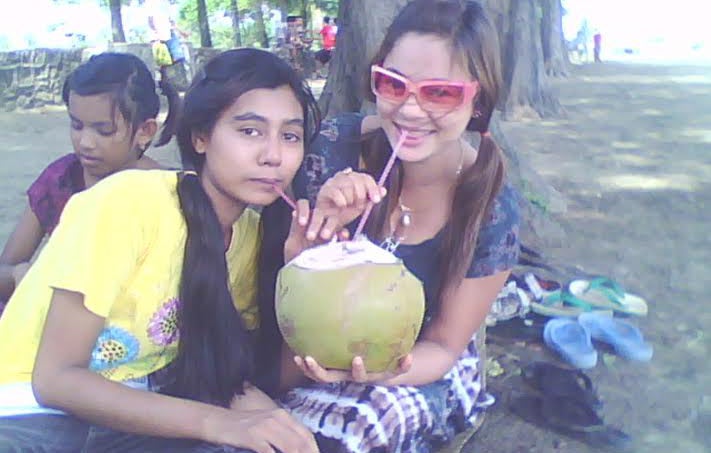
To help women and girls cope with life in camps for internally displaced persons (IDPs), UNFPA has established Women and Girls Centres in partnership with the International Rescue Committee. In the centres, women who have been subjected to gender-based violence receive medical referrals and transport to hospital. Emergency treatment is particularly important in rape cases, where post-exposure prophylaxis medicines can help prevent HIV only if they are taken within 72 hours of exposure. Women and girls are also offered individual counselling and group-based psychosocial support. Last but not least, the women-only centres function as safe spaces where women and girls can get a reprieve from the harrowing conditions of camp life. In the calm and supportive atmosphere, they are free to talk openly without fear of judgment and shame. They can access information and learn skills. Or they can simply allow themselves to rest for a moment.
UNFPA supports 15 Women and Girls Centres in Myanmar. In 2015, some 5,000 women and girls accessed the seven centres in Rakhine, and over 11,000 women and girls accessed the eight centres in Kachin.
All the staff in the Women and Girls Centres are themselves displaced. Supporting IDPs to help other IDPs is an important peer-to-peer mechanism for empowering women living in protracted displacement. Their entitlements bring financial security, and they are able to shape the response to gender-based violence in the camps.
Khin Me is a response manager. Her work at the Women and Girls Centres gives her a sense of purpose. It allows her to help women and girls in her community in a very real way, sharing her knowledge, her strength, and the hope she still carries inside her. Talking and laughing with her colleagues and the women who visit the centre, she visibly relaxes. Suddenly she looks more like the young woman in the photos, hanging out with friends, sharing tea and a joke.
“I like to work here. I feel that my work really matters. Many of the women who come here have little or no education, but we teach them not only about gender-based violence, but also about health and sanitation.”
A balance between hope and hopelessness
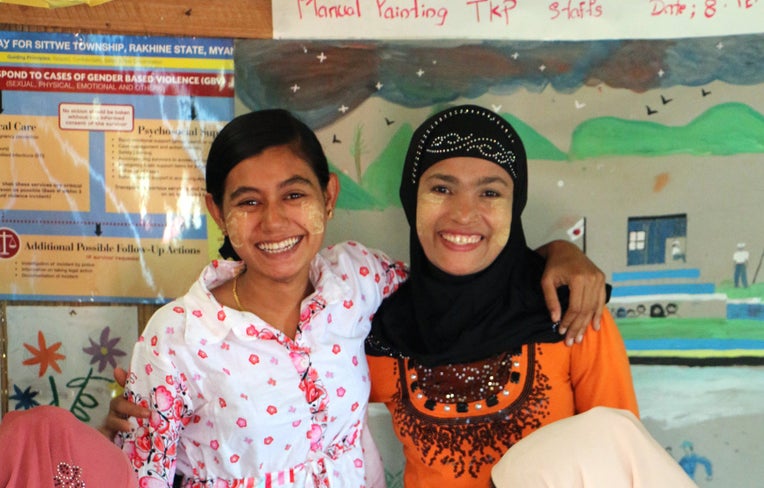
Khin Me has used her money contributions from the Women and Girls Centre to help her parents buy a small family home in the village. It is nothing like the house they had in town, but it has given the family some security while they wait for a change, nurturing a hope to move back to Sittwe. But in the centre of town, there is a vacant lot where the house and tea shop once stood. There has been no progress towards a reconciliation which would allow Khin Me and other displaced people to move back to Sittwe. Their lives are a balance between hope and hopelessness.
Four years ago Khin Me dreamed of going to diplomacy school at Yangon University. What does she dream of today?
“My dream is changing. I don’t want to go to Yangon anymore, or to America, or anywhere else in the world. I just want to go home.”

